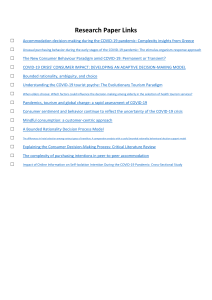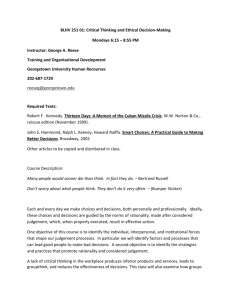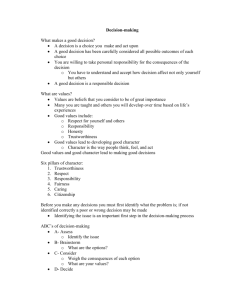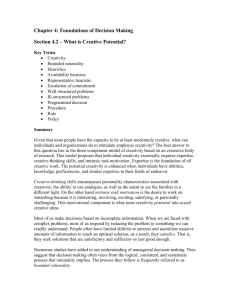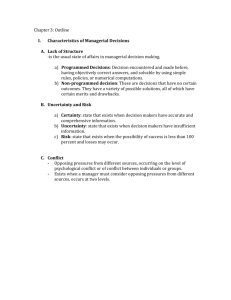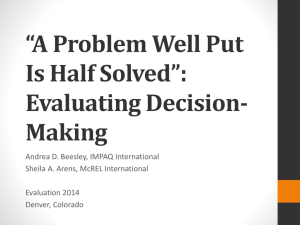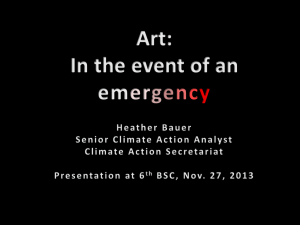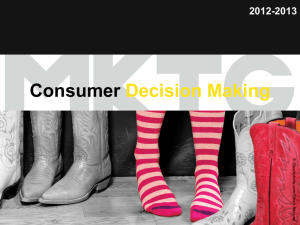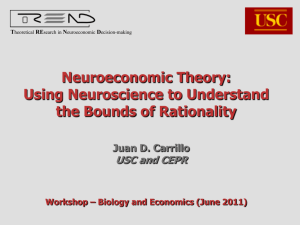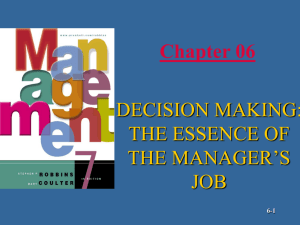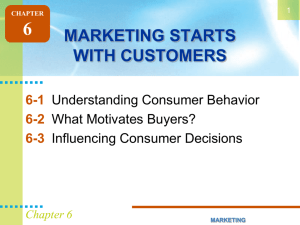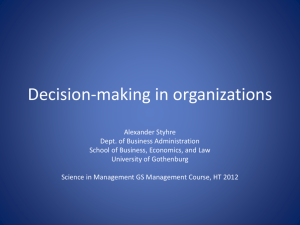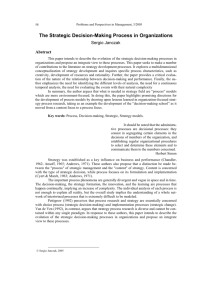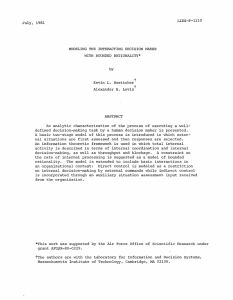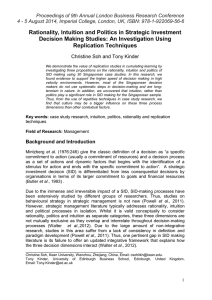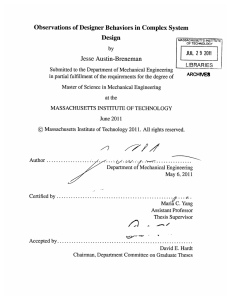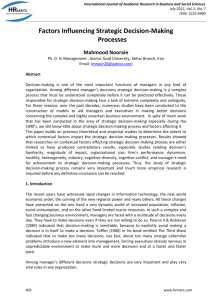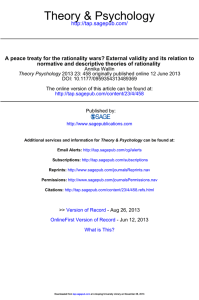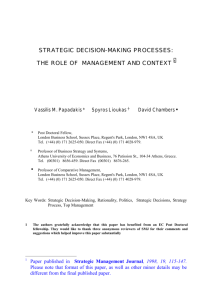CSS 330 Self-Assessment Questions - West
advertisement
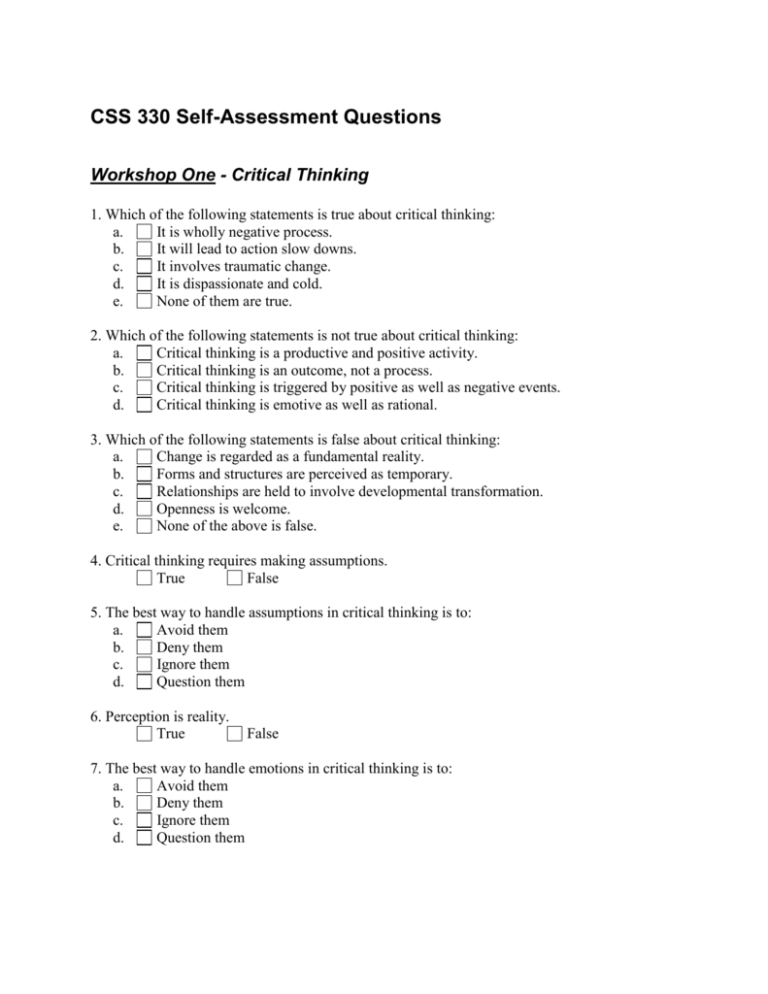
CSS 330 Self-Assessment Questions Workshop One - Critical Thinking 1. Which of the following statements is true about critical thinking: a. It is wholly negative process. b. It will lead to action slow downs. c. It involves traumatic change. d. It is dispassionate and cold. e. None of them are true. 2. Which of the following statements is not true about critical thinking: a. Critical thinking is a productive and positive activity. b. Critical thinking is an outcome, not a process. c. Critical thinking is triggered by positive as well as negative events. d. Critical thinking is emotive as well as rational. 3. Which of the following statements is false about critical thinking: a. Change is regarded as a fundamental reality. b. Forms and structures are perceived as temporary. c. Relationships are held to involve developmental transformation. d. Openness is welcome. e. None of the above is false. 4. Critical thinking requires making assumptions. True False 5. The best way to handle assumptions in critical thinking is to: a. Avoid them b. Deny them c. Ignore them d. Question them 6. Perception is reality. True False 7. The best way to handle emotions in critical thinking is to: a. Avoid them b. Deny them c. Ignore them d. Question them 8. In the context of critical thinking, an argument is: a. Any quarrel or disagreement we have with another person b. Any disputable claim involving a chain of reasoning 9. In the context of critical thinking, a fallacy is: a. An incorrect pattern of reasoning b. An unsound argument c. A method of persuasion d. Used intentionally and unintentionally e. All of the above 10. Language is very static--very black and white--especially when we write it down. True False 11. We use language to a. Inform b. Explain c. Persuade d. All of the above Workshop Two - Problem Identification 1. All of the following are information processing biases, except: a. Selective perception b. Inconstancy c. Frequency d. Complexity e. Availability 2. Which of the following is NOT a force of influence to problem identification? a. Urgency b. Importance c. Personal attributes d. Thinking styles e. All are influences 3. Which one of the following is NOT a basic element under which problems are most likely to get action? a. Problem recognition b. External pressures c. Consensus d. Necessary resources 4. Framing the problem properly is often times referred to as the first step to effective problem solving? True False 5. Human, physical, and financial can all be problem-solving resources. True False 6. Which of the following is NOT a problem-solving tool? a. Brainstorming b. Intuition c. Metaphorical thinking d. Mind mapping e. All of them are Workshop Three - Decision-Making Process 1. Which one of the following is NOT a self-limiting choice in the decision-making process? a. Bounded rationality b. Urgency c. Logic vulnerability d. Paradigms e. All of them are 2. Which one of the following is NOT a group factor in the decision-making process? a. Bounded rationality b. Group think c. Group composition d. Power e. All of them are 3. Which of the following is NOT a force of influence to decision making? a. Urgency b. Importance c. Personal attributes d. Thinking styles e. All are influences 4. Which of the following is NOT a decision-making tool? a. Importance weighting b. Benchmarking c. Multivoting d. Pareto chart e. All of them are 5. Maximizing and satisfying are two examples of degrees in making choices. True False 6. All of the following are points to consider in solution selection, except: a. Trade-off analysis b. Alternative generation c. Fallacy avoidance d. Group dynamics e. Criteria identification 7. Which of the following is not a characteristic of a convoluted action? a. One decision maker b. Relatively long c. Multiple parties involved d. Extensive search e. All of them are Workshop Four - Solution Implementation 1. Which of the following is NOT a force of influence to solution implementation? a. Contextual factors b. Motivation c. Personal attributes d. Persuasion e. All are influences 2. Which of the following is would NOT a criterion used to assess the success of an implemented decision? a. Stakeholder interests b. Measurable outcome c. Unintended consequences d. Effective use of resources e. All of them are 3. Which of the following does NOT have ethics implications in decision making? a. Personal responsibility b. Legal compliance c. Guiding principles d. Moral standards e. All of them have 4. If a decision is legal, it is ethical. True False 5. An effective manager must realize that there are some things no one can do much about. True False 6.Which of the following is not one of "rules of thumb" a manager should consider when negotiating the outcomes of actions? a. Pick causes carefully b. Minimize risk c. Develop and use a strong feedback system d. Accept failure, if it happens e. Don't rest on your laurels Workshop Five - Assessment of Decision Outcomes 1. In the assessment of decision outcomes, all of the following points should be considered, except: a. Monitoring activities b. Evaluating outcomes c. Failure rates d. Corrective actions e. Criteria modification 2. Good decisions always have good results. True False 3. Continuous improvement confirms that critical thinking and decision making is a process not an outcome. True False 4. Poor results are often based on poor implementation of a decision rather than the decision itself. True False 5. In the evaluation of decisions, a manager should also consider the following: a. Premature rejection b. Unintended consequences c. Surviving with results d. b and c only e. a, b, and c
